Official Website : https://divinenewz.com/
INTRODUCTION
Navratri, meaning “nine nights,” is one of the most significant Hindu festivals celebrated with immense devotion and enthusiasm across India and by Hindus worldwide.
Spanning nine days and nights, it is a festival devoted to the worship of the Hindu goddess Durga and her various forms. This festival is celebrated with much zeal and enthusiasm across India and in several parts of the world where Indian communities reside. Navratri is not just a
religious event; it is also a cultural extravaganza, marked by dances, music, and the coming together of families and communities. This festival, celebrated in different forms across different regions of India, holds great spiritual, cultural, and social significance.
Dedicated to the worship of Goddess Durga and her nine divine forms, Navratri symbolizes the victory of good over evil. The festival occurs twice a year—once in the spring (Chaitra Navratri) and once in the autumn (Sharad Navratri), with the latter being the more widely celebrated.
During these nine nights and ten days, devotees observe fasting, perform rituals, engage in dance (such as Garba and Dandiya), and chant prayers to seek blessings from the Divine Mother. Each day of Navratri is associated with a different form of Goddess Durga, and specific colors, offerings, and mantras are followed to invoke her divine energy.
Beyond its religious significance, Navratri offers numerous physical, mental, and spiritual benefits. From detoxifying the body through fasting to enhancing mental discipline and fostering community bonding, this festival is a holistic celebration of life, faith, and well-being.
Here we will explore the meaning of Navratri, its legends, rituals, and the profound benefits it brings to individuals and society.
ORIGINS AND MYTHOLOGICAL SIGNIFIANCE
The origins of Navratri can be traced to ancient Hindu mythology. The most widely accepted legend behind Navratri is the battle between the demon king Mahishasura and Goddess Durga. According to the myth, Mahishasura, a demon with the ability to shape-shift, terrorized the gods and gained control over the heavens. In a bid to save the world from Mahishasura’s tyranny, the trinity of Brahma, Vishnu, and Shiva combined their powers to create a powerful goddess, Durga.
Durga, a fierce and beautiful goddess, mounted a lion and engaged in battle with Mahishasura. This battle lasted for nine days and nights, during which Durga exhibited immense power and endurance. On the tenth day, Durga was victorious, slaying Mahishasura and restoring peace and order in the universe. The victory of Durga over the demon is symbolized by the festival of Navratri, which commemorates the goddess’s victory and the triumph of good over evil.
In addition to this story, the festival is also associated with the harvest season, with many communities celebrating it as a time of gratitude for the abundance of crops and the blessings of nature. The festival is an expression of devotion to the divine and a reminder of the cyclical nature of life, death, and rebirth.
MEANING AND SIGNIFIANCE OF NAVRATRI
1. Etymology and Origins
The word “Navratri” is derived from two Sanskrit words:
- “Nava” – meaning “nine”
- “Ratri” – meaning “night”
Thus, Navratri translates to “nine nights” dedicated to the worship of the feminine divine energy, Shakti, in her various forms.
2. The Two Main Navratris
The word Mainly, Navratri is celebrated twice a year, but Navratri are celebrated four times during a year:
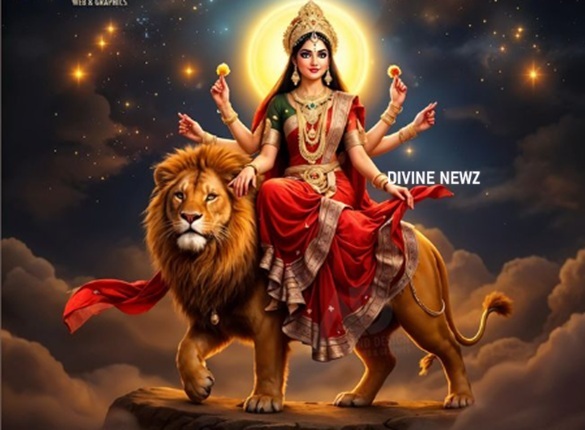
-
- Chaitra Navratri (Spring Navratri) – Observed in March-April, marking the Hindu New Year in some regions.
- Sharad Navratri (Autumn Navratri) – Celebrated in September-October, culminating in Dussehra (Vijayadashami).
Sharad Navratri is the most prominent, as it commemorates Goddess Durga’s victory over the demon Mahishasura. Two other Navratri are called “GUPT NAVRATRI”.
The Spiritual Significance
Navratri represents:
- The triumph of Dharma (righteousness) over Adharma (evil).
- The worship of Shakti (divine feminine power) as the source of creation and destruction.
- A period of inner purification, self-discipline, and devotion.
-
THE STRUCTURE OF NAVRATRINavratri is a festival that spans nine nights, and the activities that occur during these nights vary depending on the region, local traditions, and the form of the goddess worshiped. Each day of Navratri is dedicated to a different form or manifestation of Goddess Durga, and devotees observe different rituals, prayers, and ceremonies each day.
1. The First Day: Shailaputri
The first day of Navratri is dedicated to Goddess Shailaputri, who is believed to be the daughter of the Himalayas. She is depicted as a woman riding a bull, holding a trident in one hand and a lotus flower in the other. Worshipping her symbolizes the devotion to one’s roots and the importance of following the right path. On this day, devotees seek blessings for strength, power, and wisdom.
2. The Second Day: Brahmacharini
The second day is dedicated to Goddess Brahmacharini, who represents penance, austerity, and devotion. She is often depicted as holding a rosary and a water pot, symbolizing the purity of heart and soul. Worshipping Goddess Brahmacharini is believed to bring mental peace, discipline, and spiritual advancement.
3. The Third Day: Chandraghanta
The third day honors Goddess Chandraghanta, who is the embodiment of beauty and power. She is depicted with a crescent moon on her forehead, holding a bell in one of her hands. This day signifies the destruction of evil forces and the victory of good over evil. Devotees worship Goddess Chandraghanta to seek protection from all kinds of negative influences.
4. The Fourth Day: Kushmanda
The fourth day of Navratri is dedicated to Goddess Kushmanda, the creator of the universe. She is said to have created the entire universe with a single smile. Goddess Kushmanda is worshipped to obtain good health, prosperity, and success in all endeavors. Her blessings are believed to bring light and positivity into one’s life.
5. The Fifth Day: Skandamata
Skandamata, the mother of Lord Skanda (Kartikeya), is worshipped on the fifth day of Navratri. She is depicted riding a lion with her child Skanda in her lap. She symbolizes the nurturing aspect of motherhood and is revered for her compassion and love. Devotees seek her blessings for maternal protection, health, and wisdom.
6. The Sixth Day: Katyayani
On the sixth day of Navratri, Goddess Katyayani is worshipped. She is a fierce form of Durga, known for her strength and courage. She is often depicted with a sword in her hand, riding a lion. Katyayani represents the power to overcome challenges and fight against injustice. Worshipping her is believed to bestow inner strength, courage, and victory.
7. The Seventh Day: Kalaratri
The seventh day is dedicated to Goddess Kalaratri, the most fearsome form of Durga. She is depicted as having dark skin, with a fearsome appearance. Goddess Kalaratri is believed to remove all darkness and negativity from a person’s life. Her worship is seen as a way to remove obstacles, fears, and harmful influences from one’s life.
8. The Eighth Day: Mahagauri
The eighth day honors Goddess Mahagauri, who is revered as the symbol of purity and auspiciousness. She is depicted as a fair and beautiful woman, riding a white elephant. Worshipping Goddess Mahagauri is believed to purify the mind and body, ensuring peace, prosperity, and good health. Devotees seek her blessings for the removal of sins and to achieve spiritual enlightenment.
9. The Ninth Day: Siddhidhatri
The ninth and final day of Navratri is dedicated to Goddess Siddhidhatri, who grants spiritual and material fulfillment. She is believed to be the giver of all siddhis (divine powers) and blessings. On this day, devotees pray for wisdom, prosperity, and the ability to attain their highest potential.
NAVRATRI CELEBRATIONS ACROSS INDIANavratri is celebrated in various ways across India, and the regional variations reflect the diversity of the country’s cultural and religious practices.
1. Gujarat: Dandiya and Garba
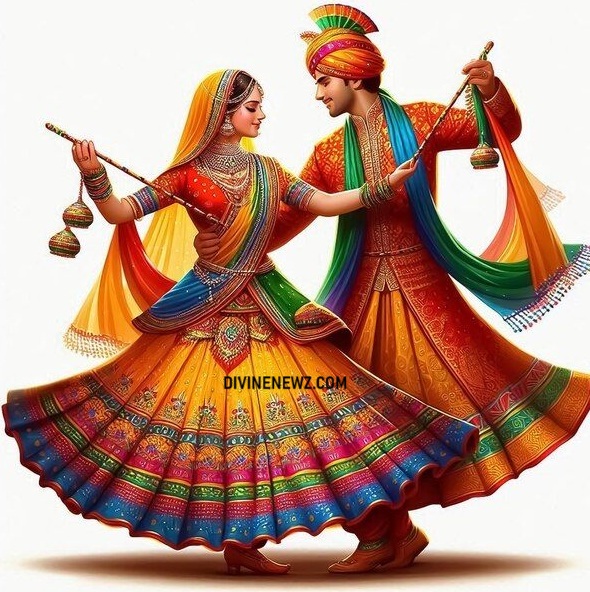
In Gujarat, Navratri is a highly anticipated event, marked by vibrant celebrations. People gather in large community events to perform Garba, a traditional folk dance, and Dandiya, a dance involving the use of sticks. The dances are accompanied by devotional music and songs dedicated to Goddess Durga. The rhythmic dances symbolize the victory of good over evil and promote unity among communities. The nights are filled with enthusiasm, and the entire state comes alive with energy.
2. Maharashtra: Golu and Dandiya
In Maharashtra, the festival is celebrated with great fervor, and many people set up Golu (a display of idols), a tradition that is especially prominent in southern India but also practiced in parts of Maharashtra. The worship of Goddess Durga and her various forms is done with elaborate rituals. Devotees fast and perform aarti and bhajans, seeking blessings for prosperity and happiness.
3. West Bengal: Durga Puja
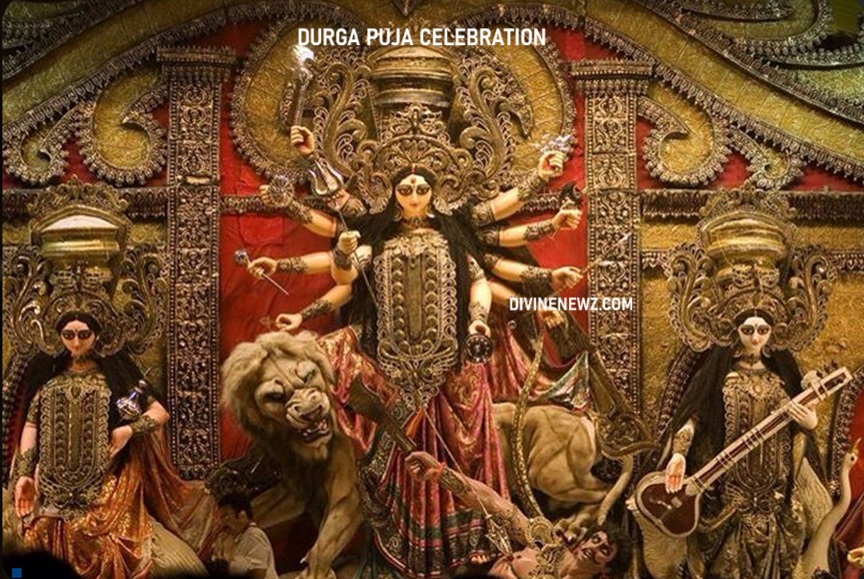
In West Bengal, Navratri culminates in the grand celebration of Durga Puja. This is one of the largest and most elaborate festivals in the region, with beautifully crafted idols of Goddess Durga being placed in pandals (temporary structures). The atmosphere is festive, with cultural performances, feasts, and community gatherings. Durga Puja represents the victory of Goddess Durga over Mahishasura, and it is a time for worship, reflection, and celebration of Bengali culture.
4. Northern India: Ram Leela and Ravan Dahan
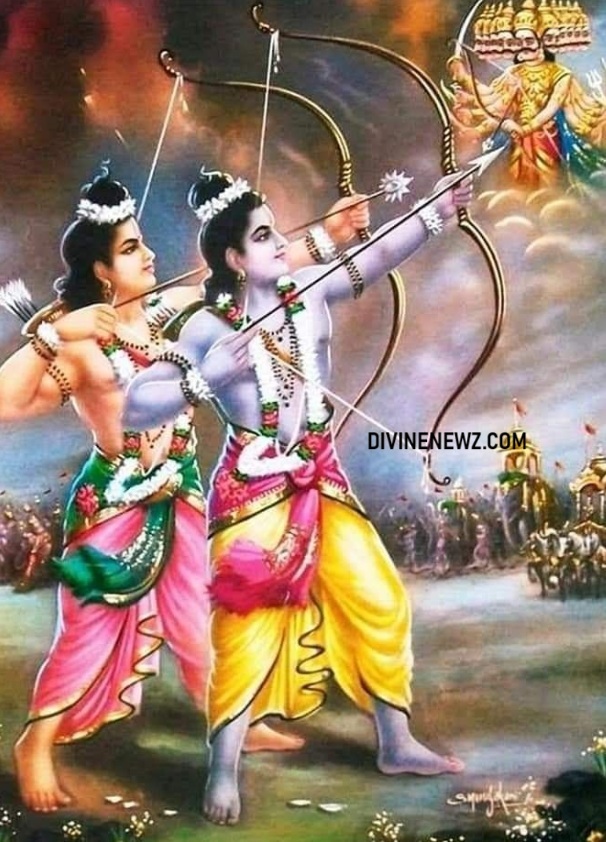
In Northern India, particularly in Uttar Pradesh and Delhi, the ninth day of Navratri coincides with Dussehra, which marks the victory of Lord Rama over the demon king Ravana. On this day, dramatic performances of the Ramayana (known as Ram Leela) are staged, culminating in the burning of effigies of Ravana, symbolizing the destruction of evil. People celebrate by lighting fireworks and feasting.
5. Southern India: Kolu and Temples
In Tamil Nadu, Andhra Pradesh, and Karnataka, Navratri is marked by the tradition of Kolu, where figurines of gods, goddesses, and mythological characters are arranged in steps. Devotees also visit temples, perform pujas, and offer prayers. The festival is a time for families to come together, and special prayers are offered for health, prosperity, and success.
SPIRITUAL SIGNIFANCE OF NAVRATRINavratri is not only a time for social celebration, but it also holds profound spiritual significance. The nine nights symbolize the purification of the mind and soul. Devotees fast, meditate, and engage in spiritual practices to seek blessings from Goddess Durga. The worship of the goddess, in all her forms, represents the different aspects of life, from creation to destruction and renewal.
The festival serves as a reminder to overcome the negative tendencies within oneself. The victory of Durga over Mahishasura represents the triumph of virtue over vice, and during Navratri, devotees seek to rid themselves of the internal demons that hinder their spiritual progress. By engaging in acts of devotion, fasting, and self-reflection, one strives to achieve a state of inner purity and peace.
CONCLUSIONNavratri is a festival that transcends religion and culture. It brings people together to celebrate the power of the feminine divine, the triumph of good over evil, and the importance of spiritual growth. Through devotion, worship, and community celebrations, Navratri serves as a reminder of the cyclical nature of life, the importance of righteousness, and the transformative power of faith. Whether through dance, prayer, or reflection, this nine-day festival offers an opportunity to purify oneself, seek divine blessings, and rejoice in the beauty of life and the triumph of light over darkness.
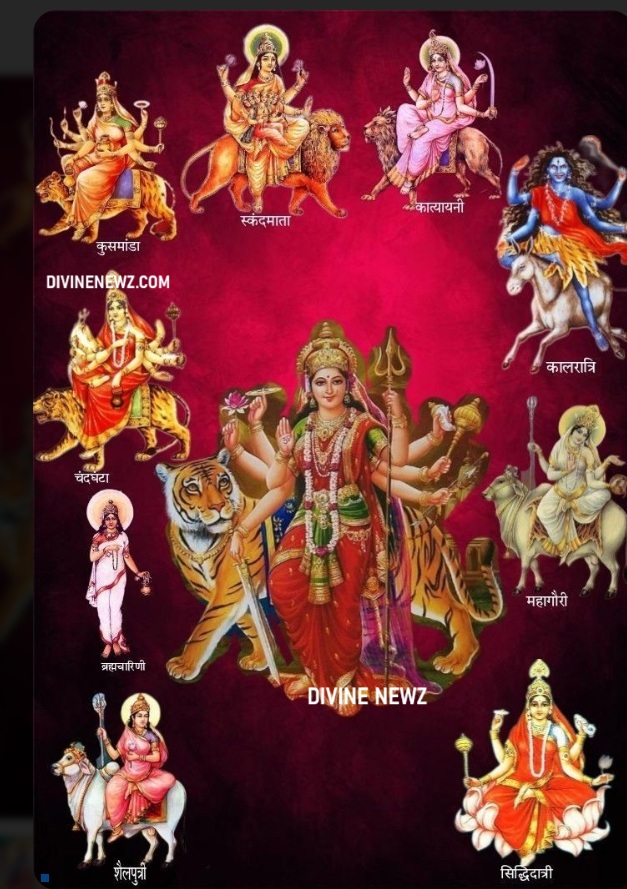
WRAPPING UPWe hope this has cleared up some of the confusion about Navratri. First of all, you will have to know about the meaning of Navratri means “Nine Nights” and after that two time the navratris comes and even two more Navratri also celebrated that is called gupt Navratri.
you still have any question, feel free to ask me via comments or via email.
Don`t forget to share what you like here on Youtube, Facebook, Instagram with your friends and family.
At DivineNewz, a spiritual and temples news related information providers, is working on the project to work for religion and information about the temples to share with you to bring new ideas about spiritual and religious world.
Get in touch with DivineNews by contacting by divinenewz6@gmail.com/ For more information, please visit: https://www.divinenewz.com


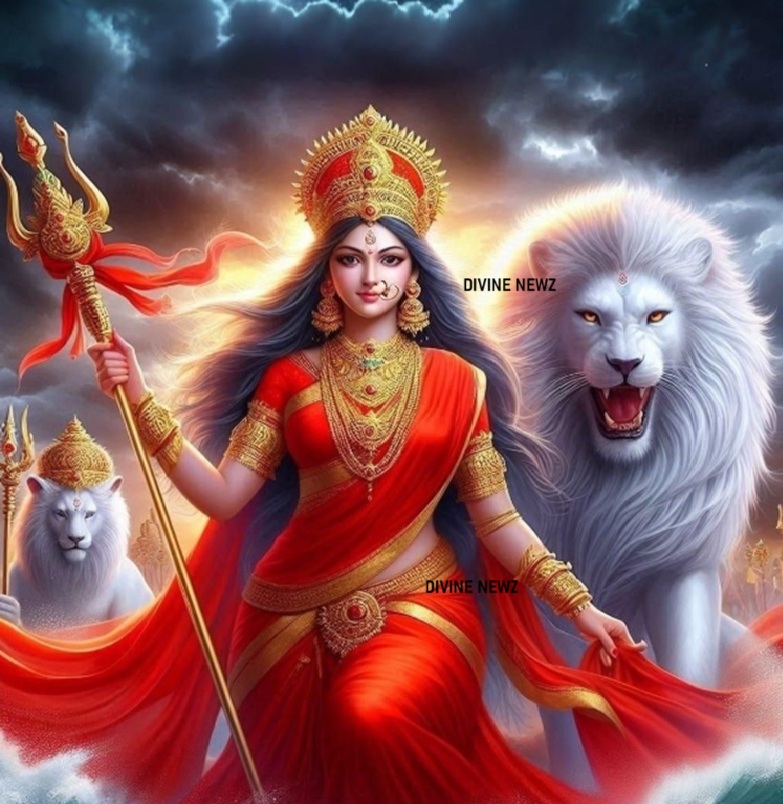

2 thoughts on “WHAT IS NAVRATRI?”